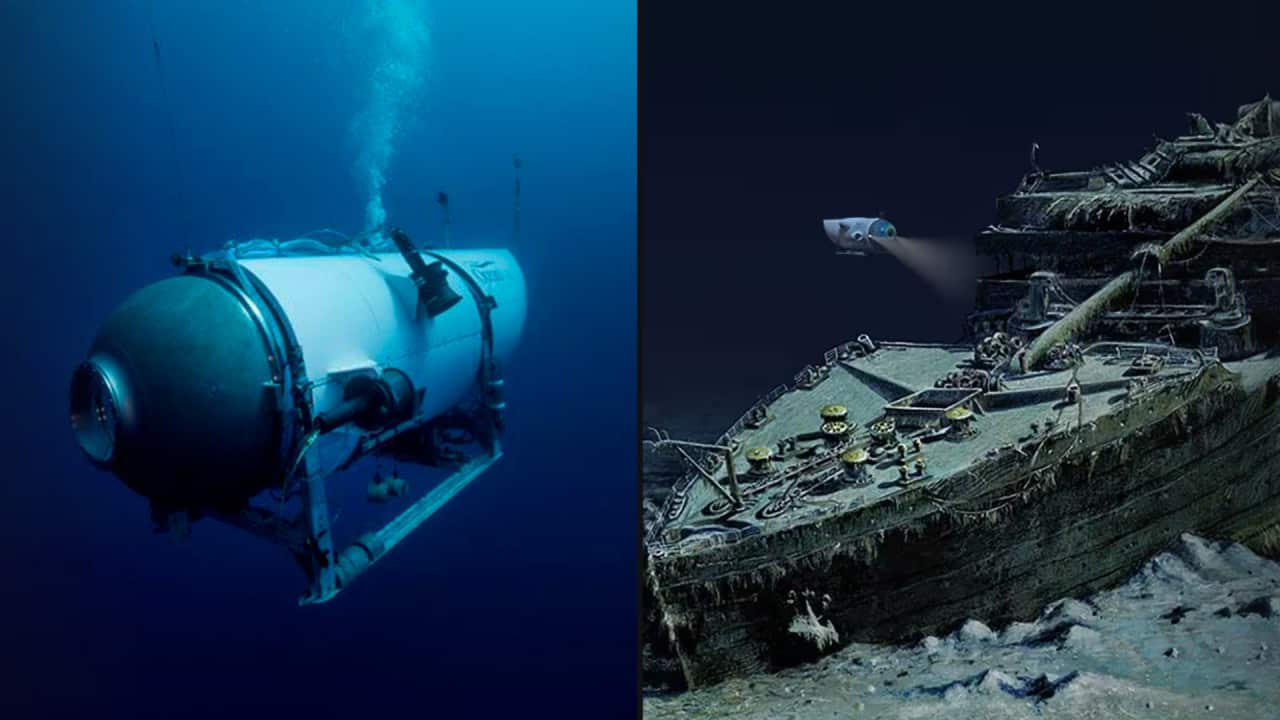Key Points
- Mexican actor Alan Estrada said his trip on the missing submersible was 'incredibly risky'.
- He travelled on it in 2022.
- He said he signed a complicated waiver.
Mexican actor and travel YouTuber Alan Estrada said his voyage on the submersible which has gone missing near the wreck of the Titanic was "extremely risky".
Estrada travelled on OceanGate's Titan submarine in 2022, but the mission was almost aborted after the vessel lost contact with its surface support ship.
As the search continues for the Titan, past passengers on the sub, have been sharing their stories of being onboard.
“As a participant in these expeditions, we knew perfectly well the risks we were involved in," Estrada told Reuters.
"We signed a release, several sheets, I don't remember how many, which explains each of the risks you run, including losing your life.
"We, those who are involved in these expeditions, know it is an incredibly risky expedition. We know that we are not going to an amusement park.”
The YouTube video Estrada posted of his mission show that at a depth of 1,000 metres, the sub lost contact with the surface.
“What happened to us is that if you lose communication, there is a tolerance period; if that communication is not recovered within that time, you have to abort the mission.
"The tolerance time passed, and we were already aborting the mission; in fact, the first ballast was dropped, and just at that moment, we recovered communication, and we didn't lose it anymore, and that's why we were able to make the descent.”
He said he hopes and prays the ship is found.
“As long as there is oxygen, they are going to be fine and basically waiting to be rescued. I hope they are on the surface because that will make things easier than if they are at the bottom of the sea.”

Credit: SBS News
"You have to be a little bit crazy to do this sort of thing," said Arthur Loibl, a 61-year-old retired businessman and adventurer from Germany.
Mr Loibl said on Wednesday he first had the idea of seeing the Titanic wreckage while on a trip to the South Pole in 2016.
At the time, a Russian company was offering dives for US$500,000.
After Washington state-based OceanGate announced its own operation a year later, he jumped at the chance for a dive in 2019 that fell through when the first submersible didn't survive testing.
At the time Mr Loibl paid US$162,000, but tickets are now reported to cost US$250,000 ($368,000).
Two years later, he went on a voyage that was successful, along with OceanGate CEO Stockton Rush, French diver and Titanic expert Paul-Henri Nargeolet and two men from England.
"Imagine a metal tube a few metres long with a sheet of metal for a floor," Mr Loibl said.
"You can't stand; you can't kneel.
"Everyone is sitting close to or on top of each other.
"You can't be claustrophobic."
During the two-and-a-half-hour descent and ascent, the lights were turned off to conserve energy, he said, with the only illumination coming from a fluorescent glow stick.
The dive was repeatedly delayed to fix a problem with the battery and the balancing weights.
In total, the voyage took 10.5 hours.
The group was lucky and enjoyed an amazing view of the wreck, Mr Loibl said, unlike visitors on other dives who only got to see a field of debris or in some cases nothing at all.
Some customers lost nonrefundable payments after bad weather made descent impossible.
He described Mr Rush as a tinkerer who tried to make do with what was available to carry out the dives but in hindsight, he said it was "a bit dubious".
"I was a bit naive, looking back now," Mr Loibl said.












